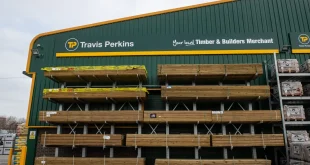But there is good news yet to hear and fine things to be seen before we go to Paradise by way of Kensal Green.
Things are what you might call looking up.
Figures seem to indicate that in various ways, we are back to pre-recessionary levels of business. Not before time.
The latest CPA forecasts, released last week, are showing that private housing starts are likely to rise 18% this year to 134,170 homes.
Having said that, the forecasts are predicting that growth will ease off a little in 2015 – indicating perhaps that 2014 is the catch-up year, where housebuilders used up their back log of builds. The CPA reckons we will see a more stable, annual growth rate of 5% from 2016-2018.
In terms of actual numbers, we are looking at 148,000 private homes by the end 2015, 171,000 by the end of 2018. Then, if you add in the expected 32,000 public sector homes, we are looking at just over 200,000 new homes a year.
It’s good that the numbers are expected to get this high. It’s a massive improvement on the dark, dark days of 2008 when housing starts fell to their lowest level since the Second World War.
It’s still not enough though is it?
We are still not building enough homes in this country for the number of people who wish to live here. And, in many cases, the homes we are building aren’t in the places where they are most needed.
Houses need to be in places where people want to live, certainly. They also need to be built in places where people can live and work and play. That means investing in infrastructure so that there are sufficient roads to get people to and from work. It means investing in businesses so that there are places for people to work and it means investing in schools so that the children who occupy the family homes every development seems to be offering have somewhere to learn.
At times, we’re good at thinking long-term in this country – the amount of time, money and effort expended on HS2 which will only kick in in 10 years’ time is testament to that. At others though, we only think about the short-term.
A huge 550-unit housing development near me has only been granted permission because the developers are building a new primary school. This will certainly alleviate some of the enormous pressure on places. However, there are no plans for increasing the number of secondary school places, already under enormous strain. See – short-term thinking to alleviate today’s problems, not long-term investment in the future.
As usual, no matter how good things might seem at the moment, there’s always something lurking on the horizon to dampen things down. Many merchants are telling me that they are busy, busy, busy – they even seem to be able to get hold of sufficient bricks and blocks, which is nice – but who knows what will happen once the election season gets into full swing?
There’s nothing more certain to be able to dampen down confidence in the housing market than doubt about which way the election will swing, who will get in and how much they will spend or take.
Economic cycles are a fact of life and it would be lovely to be able to enjoy the upswing of this for a good while before it all goes the other way again.
 Builders Merchants Journal – BMJ Publishing to Builders Merchants and the UK merchanting industry for more than 95 years
Builders Merchants Journal – BMJ Publishing to Builders Merchants and the UK merchanting industry for more than 95 years



